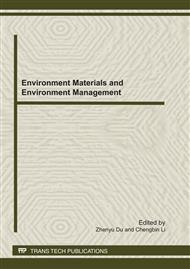p.187
p.191
p.195
p.201
p.211
p.215
p.223
p.228
p.233
Fuzzy Comprehensive Evaluation on the Thermal Power Plants’ Ability of Energy Conservation and Emission Reduction
Abstract:
Thermal power industry promotes economic development in a high speed, and it also brings the problem of resources and the environment. Building the evaluation index system of the thermal power plants’ ability of energy saving and emission reduction, we made use of the analytic hierarchy process to determine the weight. And the fuzzy comprehensive evaluation was applied to a thermal power plant in Shandong Province. We obtain following conclusion: the primer factor which confines its ability of energy conservation and emission reduction is pollutant emission. On this basis, we put forward the specific implementation measures from fiscal policy, tax policy and monetary policy, aim is to accelerate the development of China’s energy saving and emission reduction.
Info:
Periodical:
Pages:
211-214
Citation:
Online since:
July 2011
Authors:
Price:
Сopyright:
© 2011 Trans Tech Publications Ltd. All Rights Reserved
Share:
Citation:


